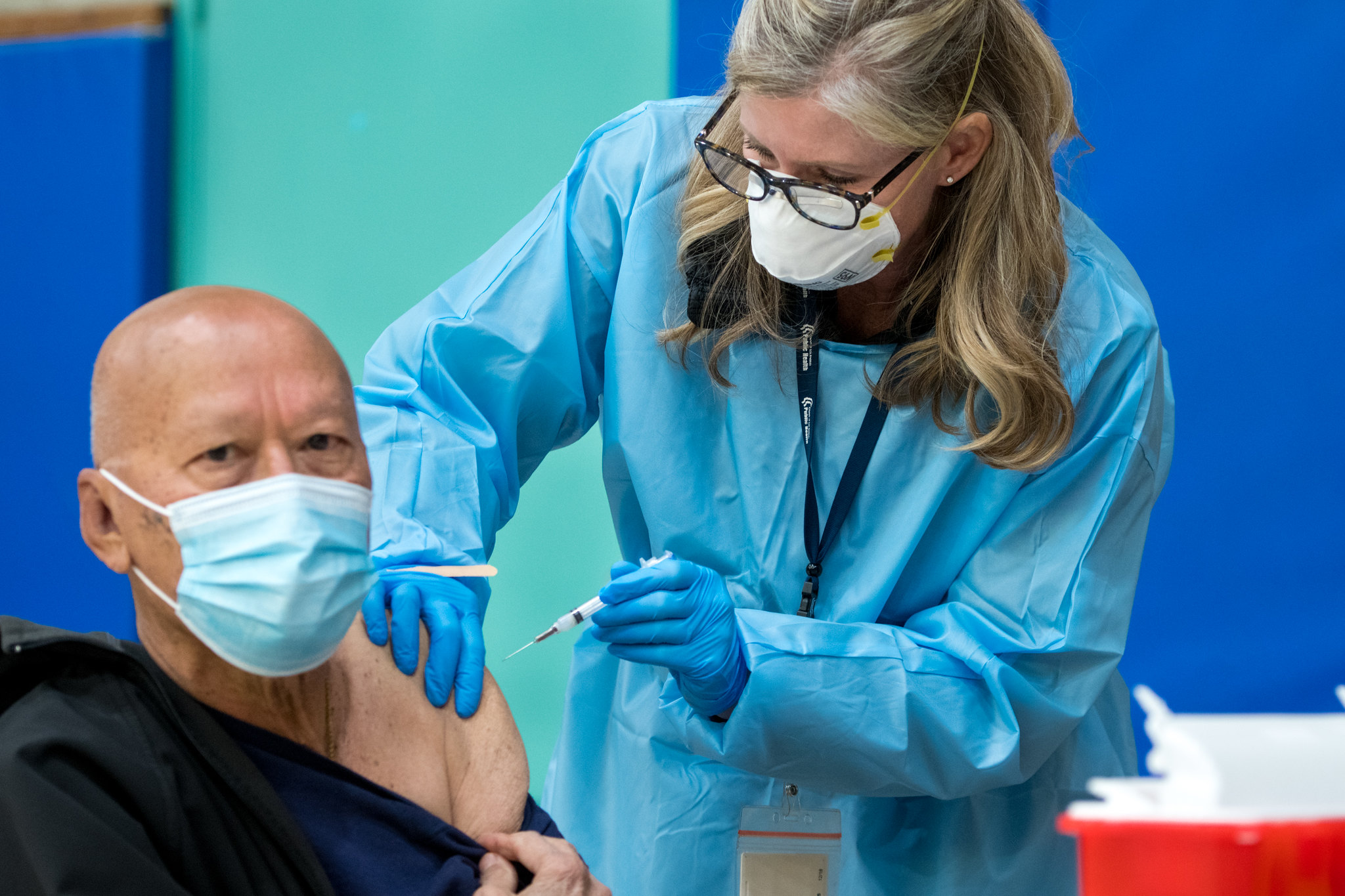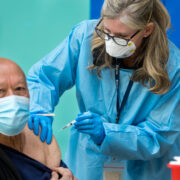
CALIFORNIA organizations are taking action to provide accessibility and education on coronavirus vaccines for senior citizens and those with disabilities in an effort to increase vaccination rates among the groups.
The California Department of Aging and California Commission on Aging are rolling out services to get more senior citizens and those who are homebound vaccinated by providing transportation to vaccination sites, increased vaccine access and countering misinformation, among other efforts.
“Even if they’re isolated, we need them to know that someone out there cares about them,” Anni Chung, executive director of Self Help for the Elderly and a member of the California Commission on Aging, said in a briefing with ethnic media on Tuesday, June 8.
For those who are unable to travel for their vaccines, My Turn, the California Department of Public Health’s vaccine scheduling program, collaborated with ambulance services to provide at-home vaccinations and also provide transportation to vaccine sites.
The department’s services can be acquired by calling its number at 833-422-4255 or visiting its website at myturn.ca.gov. Their calls will have a language line interpreter, making the call a three-way call.
Since the beginning of the vaccine rollout, Chung said access has been a key issue for senior citizens due to the lack of information on how to acquire them or vaccines not being available in their residential areas.
“I remember grandchildren hovering for six to eight hours in front of the computer trying to get appointments for their grandparents,” Chung shared.
Another issue that leads to undervaccination is certain groups’ lack of internet access.
UCSF Professor of Medicine Dr. Louise Aronson said those who are less likely to have internet access are senior citizens and people residing in rural areas, making them less likely to be able to book their vaccine appointments online.
Aronson also addressed the presumption that older people are more prone to catching the virus only because of their age. Other factors, Aronson said, like economic status and residential area, also affect the chances of an individual’s exposure since less funding is provided for protective measures like Personal Protective Equipment (PPE) like masks, gloves, and hazmat suits in nursing homes.
“We assume that these people are very old and very weak,” Aronson said. “And that’s just the way it is.”
Other organizations like Self Help for the Elderly are focusing on educational outreach, attempting to correct misconceptions about the vaccine and increase education on its content and effects. Aronson confirmed the misinformation that has been spread about the vaccine, saying that she has heard people saying the vaccine contains a chip that will be used to track an individual.
Chung addressed the misinformation by working with local Chinese coalitions, hospitals, and the YMCA to provide research and answers to those who have doubts about receiving the vaccine. According to Chung, she has seen an increased rate of vaccinations in the least vaccinated area in California through these measures.
Inconsistencies between the news and social media posts have also affected the public’s conflict about the vaccine, HelpAge USA CEO Cindy Cox-Roman said, whose organization conducted a study on Black senior citizens and their views on the vaccine. The study found factors like the inequitable health care system and access barriers play a role in the undervaccination of senior citizens.
“We are not reluctant, they are just not available,” Cox-Roman said, quoting a subject in the study.
While current data available indicates to organizations what can be done to increase vaccination rates, data on people with disabilities in the U.S. and the vaccines is lacking, according to Senior and Disability Action Executive Director Jessica Lehman, is concerning and reflects the attitudes toward people with disabilities.
“The COVID pandemic is the most horrific manifestation of ableism and ageism we have seen in our lifetime,” Lehman said.
In addition to the lack of research, Lehman said people with disabilities are often valued less in the healthcare system as they are thought of as expendable.” Limited ventilators in hospitals are often prioritized for able-bodied people, Lehman said who heard about a man who was disabled who had a ventilator pulled out on him because the doctor said he “had no quality of life.”
Resource shortages in hospitals since the pandemic have become a global issue, including bed, staffing, and machinery shortages. Older unvaccinated adults are also more likely to be hospitalized or die from the virus since they are more likely to get very sick from it. Despite the higher risk older populations may face from the virus, 23% of clinical trials for COVID-19 vaccine and treatment trials had an age cut-off, according to a study done in the JAMA Internal Medicine.
California has the current highest rate of people being vaccinated, with 45.1% of its population being fully vaccinated. Vaccines are currently provided in hospitals, retail pharmacies, health departments, and vaccine sites across the country. Those who are interested in seeing the nearest vaccine availability can visit the MyTurn website or call the MyTurn number. (Caroline Giovanie/AJPress)






